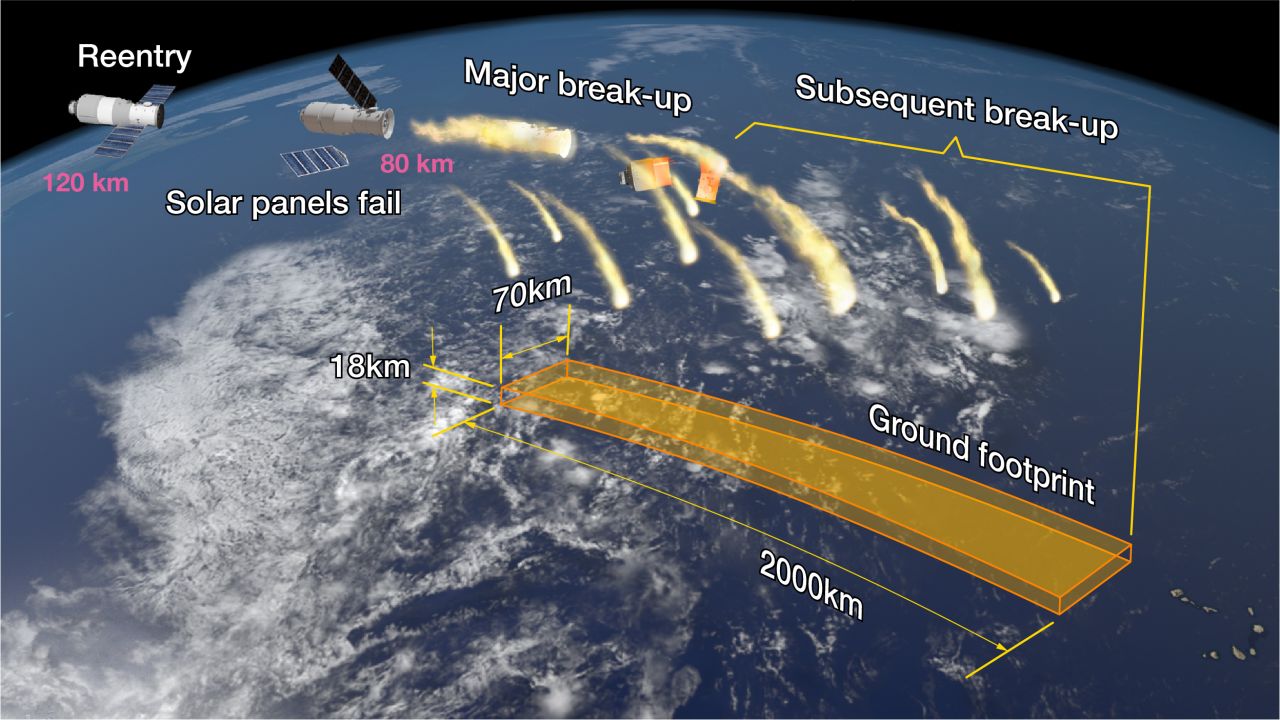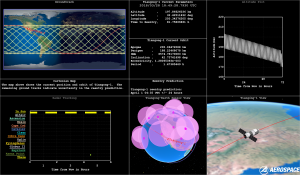
Experts tracking the crashing Chinese Tiangong-1 Space Station have narrowed down the time of possible impact, saying it will likely happen between Saturday afternoon (March 31) and Sunday morning (April 1), Eastern Time. The European Space Agency (ESA) and their Space Debris Office released their latest estimate, although they still haven’t narrowed down an impact area. The impact zone may not be known until 5-7 hours prior to crash, when the 8.5 ton Space Station falling out of control at 18,500mph returns to Earth. The impact area may also be quite large, with a debris area of over 60 miles wide possible.

Aerospace Corporation has created a dashboard that is tracking the location, speed, and general direction of where the space station is. The space station, roughly the size of a school bus, was first launched into space in September of 2011. Since then, China has lost the ability to communicate and control the once-inhabited station.
While the odds of being struck by the crashing space station are extremely remote, there are real risks associated with the crash. Radio-active substances and hydrazine on-board the spacecraft could survive re-entry Aerospace Corporation warns. “For your safety, do not touch any debris you may find on the ground nor inhale vapors it may emit.” Hydrazine is a highly corrosive and toxic chemical compound used as a thruster propellant in spacecraft. According to the Environmental Protection Agency, short-term exposure to hydrazine leads to seizures, coma, pulmonary edema as well as itchy airways, eyes and nose. Long-term exposures have been linked to the development of cancer in humans. Should parts of the space station crash in your area, you are urged to call 911 and stay away from the debris.
While being struck by the space station and its debris field is extremely remote, a person has been struck by space debris before –and lived to talk about it. In January 1977, Lottie Williams and two friends were walking through a park in Tulsa, Oklahoma around 3:30 a.m. when they saw a huge fireball streaking from the skies. In an interview with FoxNews.com, Williams said, ” We were stunned, in awe. It was beautiful.” Less than thirty minutes later, that awe turned to fear. “We were still walking through the park when I felt a tapping on my shoulder,” Williams explained. With no one near her at the time, she started to run, thinking a stranger had appeared out of the shadows. Then she heard something hit the ground behind her. “The weight was comparable to an empty soda can,” Williams told FoxNews.com. “It looked like a piece of fabric except when you tap it, it sounded metallic.” Williams was sure she’d found a piece of a shooting star. Assuming it was a piece of a shooting star, Williams brought the unusual object to her local library. There, she was referred to a local astronomy club and to the National Weather Service. The National Weather Service had informed her that a Delta II rocket had re-entered the atmosphere the night before, Additional testing of the debris proved it was indeed from the Delta II rocket.